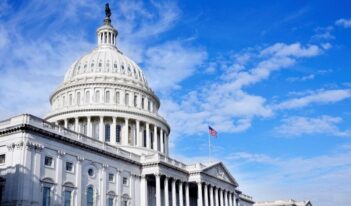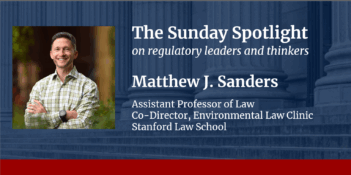
Requiring EPA cost-benefit analysis could ensure that regulations do more good than harm.
The U.S. Environmental Protection Agency (EPA) recently has taken a historic step to advance the “cost-benefit state,” the paradigm in which “government regulation is increasingly assessed by asking whether the benefits of regulation justify the costs of regulation.”
EPA issued an advance notice of proposed rulemaking soliciting public comment on whether and how EPA should create rules for weighing costs and benefits when implementing statutes. EPA also requested comment on specific analytic approaches to quantifying costs and benefits.
This advance notice raises many interesting issues—but most importantly, it could lead to fundamental and beneficial change that is long overdue.
Although every President since Ronald Reagan has required by executive order that executive agencies perform cost-benefit analysis for major rules and only regulate if the benefits justify the costs, the agencies all too often construe statutes in a way that precludes full compliance with these directives. In a garden-variety case, an agency interprets a legislative provision that is silent or ambiguous on the role of cost-benefit analysis—perhaps with analysis of some legislative history to support the agency’s preferred interpretation of the text—to establish a decision standard inconsistent or in conflict with the presidential order requiring cost-benefit balancing.
Yet the actual statutory text does not prohibit cost-benefit balancing. And, of course, none of the legislative history satisfied the constitutional requirements for becoming law, and thus neither requires nor authorizes violating the presidential directive. This dubious approach to statutory interpretation remains one of the greatest yet most readily addressable impediments to the cost-benefit state.
The scope of EPA’s discretion to balance benefits and costs under ambiguous statutes is critical because most environmental statutes, like other regulatory statutes, are silent or ambiguous on cost-benefit analysis. Moreover, alternatives to cost-benefit analysis, such as feasibility analysis, are inferior tools for enhancing societal well-being. Feasibility analysis involves regulating any significant risk to the extent technologically or economically feasible. Compelling evidence shows that feasibility analysis lacks a normative justification, can just as easily lead to under-regulation as to over-regulation, and should have no place in government regulation. This evidence highlights the need to reduce impediments to the cost-benefit state.
When I served at the Office of Information and Regulatory Affairs (OIRA) in the White House Office of Management and Budget, I had the opportunity to work on new regulations under a section of the Clean Water Act. The section is silent on cost-benefit balancing and instructs that the standard for cooling water intake structures should “reflect the best technology available for minimizing adverse environmental impact.” With the enthusiastic encouragement of OIRA, EPA adopted a cost-benefit standard—but the standard was initially overturned 3-0 by the U.S. Court of Appeals for the Second Circuit.
Fortunately, in Entergy Corp. v. Riverkeeper, Justices Antonin Scalia and Stephen Breyer joined in a 6-3 reversal that made quite clear EPA’s broad discretion to interpret statutes that are silent or ambiguous on benefit-cost balancing as permitting, not forbidding, such rational regulation. The Court noted that the “best” technology could be the most efficient and described as “eminently reasonable” the conclusion that the statutory “silence is meant to convey nothing more than a refusal to tie the agency’s hands as to whether cost-benefit analysis should be used, and if so to what degree.”
Although Entergy did not mandate that agencies use cost-benefit analysis to implement ambiguous statutes, it raised the ante for those that evade it. Since the Entergy Court clarified the broad discretion of agencies to employ cost-benefit balancing, under basic principles of administrative law, if an agency eschews this balancing, the agency must provide a “reasoned explanation” for the decision to regulate in a manner that could do more harm than good, or provide a reasoned explanation for the agency’s indifference to that outcome. Absent a reasoned explanation, the agency’s rule could be overturned as arbitrary and capricious.
The U.S. Supreme Court later made the arbitrary and capricious standard quite clear in Michigan v. EPA, where a 5-4 majority held that EPA unreasonably refused to consider cost in initially deeming a regulation “appropriate and necessary.” The Court also unanimously supported the principle that EPA must consider cost at some stage in the regulatory process, unless prohibited by statute.
Thus, after Entergy and Michigan, it is clear that EPA can reinterpret its regulatory statutes and require full cost-benefit balancing, not just feasibility analysis, to set regulatory standards—unless prohibited by law.
Although the requirement to balance benefits and costs has stood for nearly four decades, it has been an executive branch monopoly. The general requirement to conduct the cost-benefit analysis and to do more good than harm has only been requested by presidential orders and only overseen by OIRA. Having worked at OIRA, I strongly support the system for presidential review of rules and its essential role in improving their quality, efficiency, and accountability.
I also believe, however, that the status quo is insufficient for many reasons. These reasons include the institutional limitations of the agencies and OIRA—such as bureaucratic turf battles, failure to use both internal and external expertise, bias, and the mismatch between the vast volume of regulation and OIRA’s shrinking resources. Political dysfunctions—such as inconsistent support for OIRA by varying administrations, interest group rent-seeking, and presidential electoral politics—also limit the effectiveness of the status quo. As only one branch of government owns the process—and the cost-benefit directive can be treated more as a request than a binding requirement—regulatory reviews may simply conclude with self-praise.
Although the courts have been evolving toward the cost-benefit state in Supreme Court cases such as Entergy and Michigan as well as in lower court decisions such as Business Roundtable v. SEC and Cooling Water Intake Structure Coalition v. EPA, the progress has been slow and tentative. Moreover, the cost-benefit executive orders have expressly precluded judicial review. If EPA issues its own regulations requiring cost-benefit balancing for implementing its regulatory statutes, the courts could ensure compliance with those provisions. This would further EPA’s goals of increasing the consistency and transparency of how it interprets and implements its statutes.
Reasonable minds can agree that the goal of regulation is to enhance, not undermine, societal well-being. Doing more good than harm is not only common sense and the essence of rational decision making—it also could bridge the partisan divide.
The views expressed in this essay are Mr. Noe’s own and do not represent the views of the American Forest & Paper Association or its members.
This essay is part of a series, entitled Consistency and Transparency in Environmental Cost-Benefit Analysis.




